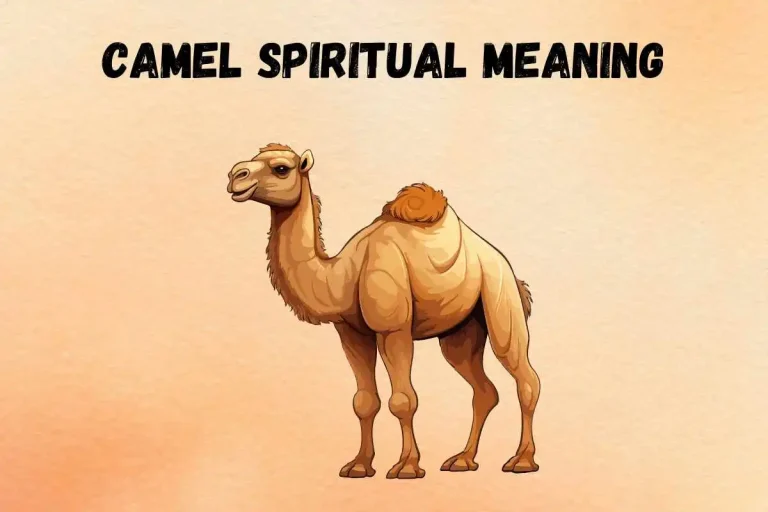Xenopus Spiritual Meanings and Symbolism

The Xenopus frog is a unique amphibian with deep spiritual meaning. Found in sub-Saharan Africa, these frogs live both in water and on land, making them symbols of adaptability and balance. Their special claws and sensitive skin help them navigate their environment, much like how we navigate life’s challenges.
Scientists often study Xenopus because of their remarkable biology, including their ability to regenerate. This trait makes them a powerful symbol of healing and renewal. Whether in nature or as pets, these frogs remind us that change and growth are always possible.

Key Takeaways
- The Xenopus frog symbolizes transformation, resilience, and intuition, teaching us to embrace life’s changes.
- Its connection to water represents emotional depth, urging us to explore our inner selves and trust our instincts.
- With their regenerative abilities, Xenopus frogs remind us that healing and renewal are always within reach.
- They encourage a balance between practicality and spirituality, helping us stay grounded while growing spiritually.
What Does It Mean When You See a Xenopus?
Spotting a Xenopus can be a spiritual sign, often linked to transformation and intuition. Since they live in water—a symbol of emotions—they encourage us to explore our inner feelings and subconscious thoughts. Their life cycle, from tadpole to frog, mirrors our own journeys of personal growth.
If you encounter a Xenopus, it might be a nudge to reflect and adapt. They remind us that life is full of cycles, and sometimes, we must let go of the old to welcome the new. Their presence can also signal a time to trust your instincts and embrace deeper wisdom.
Xenopus Symbolism
The Xenopus represents balance between two worlds—water and land, emotions and logic. This duality teaches us to stay grounded while staying open to spiritual insights. Their ability to shed skin and regenerate ties them to themes of rebirth and resilience, showing that we, too, can heal and start fresh.
In many cultures, frogs symbolize cleansing and new beginnings, and the Xenopus is no different. Their connection to water highlights the importance of emotional clarity and intuition. By observing these creatures, we learn that change is natural, and every ending leads to a new path.
7 Spiritual Meanings of Xenopus
As you explore the spiritual meanings of the Xenopus, you’ll discover its deep connection to transformation and rebirth.
This captivating amphibian also symbolizes intuition, psychic abilities, and the importance of adaptability and resilience.
Additionally, the Xenopus is associated with cleansing, purification, emotional healing, and overall balance.
1. Transformation and Rebirth
The Xenopus frog is a strong symbol of change and spiritual rebirth. It begins life as a tiny tadpole, swimming around without legs, and then slowly transforms into a full-grown frog. This process of change is more than physical—it reflects how we grow as people and go through big shifts in our lives.
This little frog shows us that it’s okay to let go of old habits or thoughts that don’t help us anymore. It has the special power to grow back lost body parts, and that tells us something important. It reminds us that we also have the ability to heal and recover after tough times.
Many people see the Xenopus as a sign that transformation takes time and patience. Things might be unclear at first, but trusting the process can lead to something new and better. Watching how it changes can give us hope that we, too, can grow in ways we didn’t expect.
When we think about the Xenopus, we might feel encouraged to move forward, even if the path feels strange or scary. That makes this frog a strong guide for anyone who’s going through change or trying to grow into a better version of themselves.
2. Intuition and Psychic Abilities
The Xenopus isn’t only about physical change—it also stands for intuition and inner knowing. This frog is deeply connected to water, which often represents feelings and invisible energies. Spending time learning about the Xenopus might help you feel more in touch with your gut feelings or inner voice.
The African clawed frog, as it’s also called, can sense very small changes in its surroundings. That makes it a great example of how being quiet and still can help us notice things we might normally miss. Its connection to water adds to this idea, since water is linked to emotion, dreams, and spiritual insight.
Some people believe the Xenopus can help strengthen psychic skills. They say that meditating on this frog or keeping an image of it close can help open up a clearer path to spiritual guidance. It’s not about magic—it’s about paying attention to what’s already there, inside of you.
By learning from the Xenopus, we can start to notice little signals from the world around us. This frog teaches that trusting your intuition might lead you to answers you didn’t expect.
3. Adaptability and Resilience
The Xenopus frog is also known for being incredibly adaptable and strong. It can live in many different places, even in puddles that dry up. That kind of flexibility can teach us how to handle change without falling apart.
In life, things don’t always go the way we plan. But the Xenopus reminds us that we can still find a way to keep going. Whether it’s a new school, a tough problem, or an unexpected event, this frog shows how being flexible can help us stay on track.
This small creature doesn’t give up when the environment gets hard. Instead, it adjusts and survives. That can inspire us to face our own problems with the same kind of inner strength and calmness.
By looking at the Xenopus, we learn how important it is to stay open to change. It helps us remember that even in hard times, there is always a way forward.
4. Cleansing and Purification
The Xenopus also stands for cleansing and getting rid of negative energy. Since it lives in water, and water is often a symbol of washing away what’s old, this frog reminds us that we all need a fresh start sometimes.
Its smooth skin and clean movements in the water show how we can let go of bad thoughts, bad habits, or even bad memories. Watching the Xenopus swim can help us feel like we are letting go of stress or heavy feelings.
Spending time near water or even taking a relaxing bath can help us feel refreshed. The Xenopus encourages simple rituals like these to clear out the mental clutter and create space for peace and calm.
This frog doesn’t carry things it doesn’t need. That’s a gentle nudge for us to do the same in our own lives—to keep only what helps us feel balanced.
5. Emotional Healing and Balance
The Xenopus’s movements in water look smooth and peaceful. Watching this can remind us to be gentle with our own emotions. Instead of fighting what we feel, we can learn to move with our emotions, like the frog moves with the current.
Its ability to live both in water and on land also hints at balance. It shows us how we can live with both happiness and sadness and still be okay. The Xenopus doesn’t ignore its environment—it works with it, and that’s a lesson in emotional balance.
This frog’s ability to transform is also a reminder that healing is possible. Even if you’re going through a tough time emotionally, there’s always a way to move forward.
Taking time to reflect, to be still, and to feel things honestly can help us heal. And the Xenopus quietly supports us in doing that.
6. Fertility and Abundance
Another deep meaning of the Xenopus is fertility and plenty. Since it lays many eggs and grows in both water and on land, it represents how life can grow in many places. It’s a sign of energy that creates and multiplies.
The frog reminds us that we are also able to grow and bring new things into the world—whether it’s ideas, relationships, or personal goals. This message is about seeing the richness already around us and being thankful for it.
It encourages us to pay attention to the things we are building in our lives. When we take care of them, they can grow into something meaningful.
The Xenopus is a little creature, but its energy brings a big message: there is always more life, more growth, and more to be thankful for.
7. Connection to the Unseen
Lastly, the Xenopus connects us to things we can’t always see. It moves between water and land, which are like two different worlds. This shows how it acts as a bridge between the physical world and the world of energy or spirit.
Some people say it brings messages from deeper parts of life. When you sit quietly and think about this frog, you might start to feel more connected to the hidden parts of yourself and the world.
This isn’t about seeing ghosts or spirits—it’s more about noticing the small signs or feelings that help guide your decisions. The Xenopus can help us tune into that quiet guidance.
By following the energy of this frog, we can begin to notice the deeper layers of life and feel more connected to everything around us—even the parts we can’t touch.
Xenopus Symbolism in Different Cultures and Contexts
The Xenopus frog, with its soft skin and gentle hopping, has quietly found its way into myths and beliefs around the world. Many cultures have looked at this small amphibian and seen something much bigger—something meaningful and even magical. Its connection to both land and water made it a powerful symbol in places where nature and spirit are closely tied.
Different civilizations, from Native American tribes to Celtic warriors and African shamans, saw the Xenopus as a creature that wasn’t bound to one world. Instead, it moved between them. This movement made people believe it carried messages or guided souls across unseen boundaries.
People didn’t always see frogs as ordinary animals. In fact, they were often seen as signs of life changing, seasons turning, or spirits visiting. The Xenopus especially stood out because of how it could thrive in both wet and dry places, something few other creatures could do so well.
By exploring how the Xenopus frog is viewed in different cultures, we can learn a lot about what matters to people—whether it’s the idea of rebirth, change, or finding balance between two parts of life. This little frog carries a big message across continents and centuries.
Native American Culture
In Native American traditions, the Xenopus frog means much more than a small, wet creature. It stands for change, spiritual journeys, and the natural flow of life. Many tribes saw it as a sign that something important was about to begin or shift.
Some stories say the Xenopus is a spiritual messenger. It travels between the world we live in and the world of spirits. Because it lives both in water and on land, it seems to belong to two different worlds. This made people believe it could bring messages from ancestors or guide lost souls.
Creation myths often show the frog playing a key role in the circle of life. Birth, death, and rebirth weren’t just ideas—they were deeply connected to real animals like the Xenopus. Its life stages—from egg to tadpole to adult—symbolized the same stages humans go through.
You might see images of the Xenopus on tribal art, worn during ceremonies, or painted onto drums. Each appearance carries deep meaning. For some, it’s a sign of hope. For others, it’s a guide through change or a reminder that the spirit world is always close.
Above all, the frog’s strength to survive hard times made it a symbol of resilience. Life can be unpredictable, but like the Xenopus, we can move forward with patience and flexibility.
Celtic Culture
To the Celts, the Xenopus wasn’t just another frog—it was a symbol of deep connection between nature and spirit. Since it lived in two worlds, water and land, they believed it held wisdom about both.
This idea matched the Celtic belief that life isn’t fixed. Things shift, flow, and repeat. The Xenopus reminded people of cycles—like the moon’s phases or the changing seasons. At night, when frogs are more active, the Celts thought they could sense messages from beyond.
Moon goddesses were also tied to this creature. Its night-time movements made the Xenopus feel like a companion to lunar deities. People believed it could lead them through dark times into light again.
Some even thought the Xenopus held ancient knowledge. Its presence in stories and poems reflected a deeper meaning—a guide, a teacher, or a spirit helper. In this way, it stood for wisdom that came not from books but from nature and tradition.
The Celts respected animals deeply. The Xenopus was no different. It wasn’t only a symbol; it was a reminder that the physical world is full of signs pointing to something bigger than ourselves.
Nordic Culture
In Nordic stories, the Xenopus might not be as famous as dragons or wolves, but it still played an important spiritual role. The old Norse believed in creatures that lived between realms, and the Xenopus fit that perfectly.
It was sometimes linked to the god Njǫrðr, who ruled the sea and wind. Since the Xenopus moved in both water and land, it reflected his control over natural forces. Its link to both elements made it feel like a creature of balance.
The frog’s nighttime activity also tied it to Nanna, the moon goddess. Her powers were about healing, cycles, and returning to life after sorrow. When people saw frogs under the moon, they might have thought it was a sign that Nanna was nearby.
Another reason the Xenopus stood out was its ability to regrow lost limbs. This was more than a science fact—it was a spiritual message about bouncing back after trouble. Life could break you, but like the frog, you could grow stronger again.
The Norse people lived in a world full of natural challenges, and the Xenopus reminded them that strength often comes from being able to adapt, survive, and transform, no matter the conditions.
African Culture
In many African communities, frogs aren’t just animals—they are spiritual beings. The Xenopus, in particular, is viewed with deep respect and wonder. Its presence can mean change is coming or that blessings are near.
In parts of West Africa, it’s linked to Oshun, the goddess of love and water. Seeing a frog might be taken as a sign that Oshun is offering her help—bringing wealth, healing, or fertility to those in need.
In East Africa, the Xenopus is seen as a messenger from ancestors. Its croaks aren’t random noises; they’re believed to carry meaning, sometimes used during rituals to ask for protection or wisdom.
Beyond spiritual uses, the Xenopus also appears in traditional medicine and folklore. People study its behavior, its skin, and even its movements. These observations turn into stories and teachings passed down through generations.
This frog’s place in African culture shows how deeply people connect with animals—not only for survival but for guidance, healing, and tradition. The Xenopus becomes a symbol that touches both the body and the soul.
Eastern Culture
In Eastern parts of the world, the Xenopus is seen as a creature of balance, energy, and long life. It doesn’t scream for attention, but those who notice it believe it holds powerful meaning.
In Chinese traditions, the frog’s dual nature connects to yin and yang—opposites working together. Since it lives in both water and on land, the Xenopus shows how balance brings peace. People use this idea in energy work and healing.
In Japan, some believe the Xenopus acts as a messenger between humans and gods. Shrines sometimes include frog statues to welcome these silent guides, especially when people seek spiritual answers.
In Hindu stories, the frog is connected to Saraswati, the goddess of wisdom. Because the frog can transform and adapt, it represents the flexible mind that learns and grows.
Across all these cultures, the Xenopus teaches that even small, quiet things can carry deep power. It reminds people to stay open to spiritual messages, protect their energy, and trust in life’s natural flow.
Hindu Culture
In Hindu beliefs, every animal has a meaning, and the Xenopus is no exception. Its connection to Saraswati, the goddess of learning and music, makes it a sign of deep thought and clarity.
Saraswati is often shown sitting calmly on a lotus, and the frog’s link to water makes it feel like part of her world. Its quiet nature matches the peaceful feeling that comes when your heart and mind are in tune.
The frog’s life between two elements—land and water—mirrors the path of spiritual growth. You start on earth, learning through everyday life, but over time, you move toward something higher and more meaningful.
In some ceremonies, frogs are honored or symbolically included when people ask for wisdom or new beginnings. They remind the faithful that life is about growing at your own pace, step by step.
Through this small animal, people are encouraged to stay patient, thoughtful, and open to the lessons that come from both nature and the divine.
Arts and Literature
The Xenopus frog hasn’t only stayed in stories or spiritual beliefs—it has also hopped into art and writing. Across time and cultures, artists and authors have used the frog to talk about big ideas in small, simple ways.
In Egyptian hieroglyphs, the frog is a sign of Heket, a goddess of birth and new life. In West Africa, the Dogon people include frog images in their art to show the endless dance of life and the stars.
Writers have also found meaning in the Xenopus. In ‘One Hundred Years of Solitude,’ the frog helps explain how time repeats and how life is connected. In ‘Midnight’s Children,’ it stands for change and self-discovery.
These examples show how deeply the Xenopus has inspired people. It helps them express what can’t always be said with plain words—like emotions, memories, or ideas about the universe.
Whether in paint or poetry, this little frog becomes a symbol for some of the deepest parts of being human.
Mythology
Mythology often turns everyday creatures into symbols with powerful meaning. The Xenopus frog has earned its place in many of these stories, thanks to its life between two worlds.
In Egypt, it was tied to Heqet, a goddess of fertility and rebirth. Frogs would appear after the Nile flooded, bringing new soil and fresh crops. People saw this and thought of new beginnings.
In African tales, the frog is a spirit guide. Its ability to move between land and water made it a messenger—someone who could speak with both gods and ancestors.
These stories often focus on the circle of life, where birth, death, and rebirth are all connected. The Xenopus helped people understand that even endings can lead to new starts.
Through these myths, the Xenopus becomes more than an animal. It turns into a way to talk about the unseen world and the mysterious paths our lives follow.
Xenopus Biblical Meanings
Though the Xenopus isn’t named in the Bible, its nature fits well with Biblical symbols. Water, for example, is a sign of mystery and spiritual depth. The frog’s home in water links it to these ideas.
At the same time, living on land shows a connection to the physical world. This makes the Xenopus a symbol of both earthly and spiritual life.
Some see the frog’s movements as a kind of journey of the soul. You might go through dark times, like the depths of water, before rising up to a better place.
In the Bible, transformation matters. From old to new, lost to found. The Xenopus, always changing, reflects this belief. Even if not named directly, its message fits well into spiritual themes found in Scripture.
Spiritual Meaning of Dream About Xenopus
Seeing a Xenopus in your dream might mean your spirit is searching for deeper truths. The frog stands between two worlds, and your dream might be pointing to something hidden inside you.
You might feel stuck or confused. But this dream can be a sign that change is coming. Like a tadpole growing legs, you’re moving toward something new.
Frogs also mean rebirth. Maybe you’re leaving old habits behind. Or learning something that opens your mind and heart in a big way.
The Xenopus in your dream could be saying, “You’re growing. Trust the process.” Even if it’s hard now, there’s something powerful waiting for you on the other side.
Xenopus Spirit Animal, Totem, and Power Animal
As a spirit animal, the Xenopus shows up when you need emotional balance or spiritual strength. It reminds you to stay soft inside, even when life feels hard outside.
When it acts as a totem, it stands for adaptability and growth. Some people feel a close bond with this animal all their lives, using its energy to guide their choices and actions.
As a power animal, the Xenopus gives courage. It helps you face tough feelings or situations. Its message is clear: don’t run from change—grow through it.
Each of these roles teaches you something about how to move through life. Whether you call on the frog in prayer, meditation, or art, it has wisdom to share.
Final Thoughts
The Xenopus frog stands as a symbol of change, healing, and balance. Its life in two worlds teaches us how to stay steady during hard times.
It appears in myths, dreams, and art, offering quiet lessons about how to keep growing, even when things are uncertain.
For those who feel a connection to this small creature, it can act as a guide or reminder—that strength often looks like softness, and wisdom can come from quiet places.
No matter where you see it—in a story, a symbol, or a dream—the Xenopus carries a powerful message about life’s endless chances to begin again.
You Might Also Like
1) Wolverine Spiritual Meanings and Symbolism
2) Wildebeest Spiritual Meanings and Symbolism
3) Antelope Spiritual Meanings and Symbolism
4) Cuckoo Spiritual Meanings and Symbolism
5) Crane Spiritual Meanings and Symbolism





